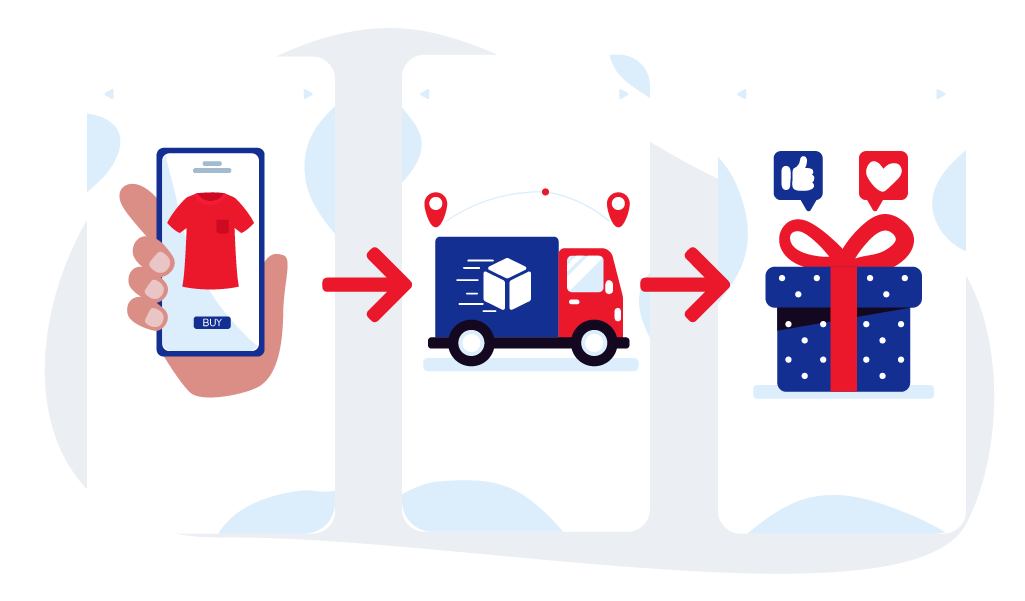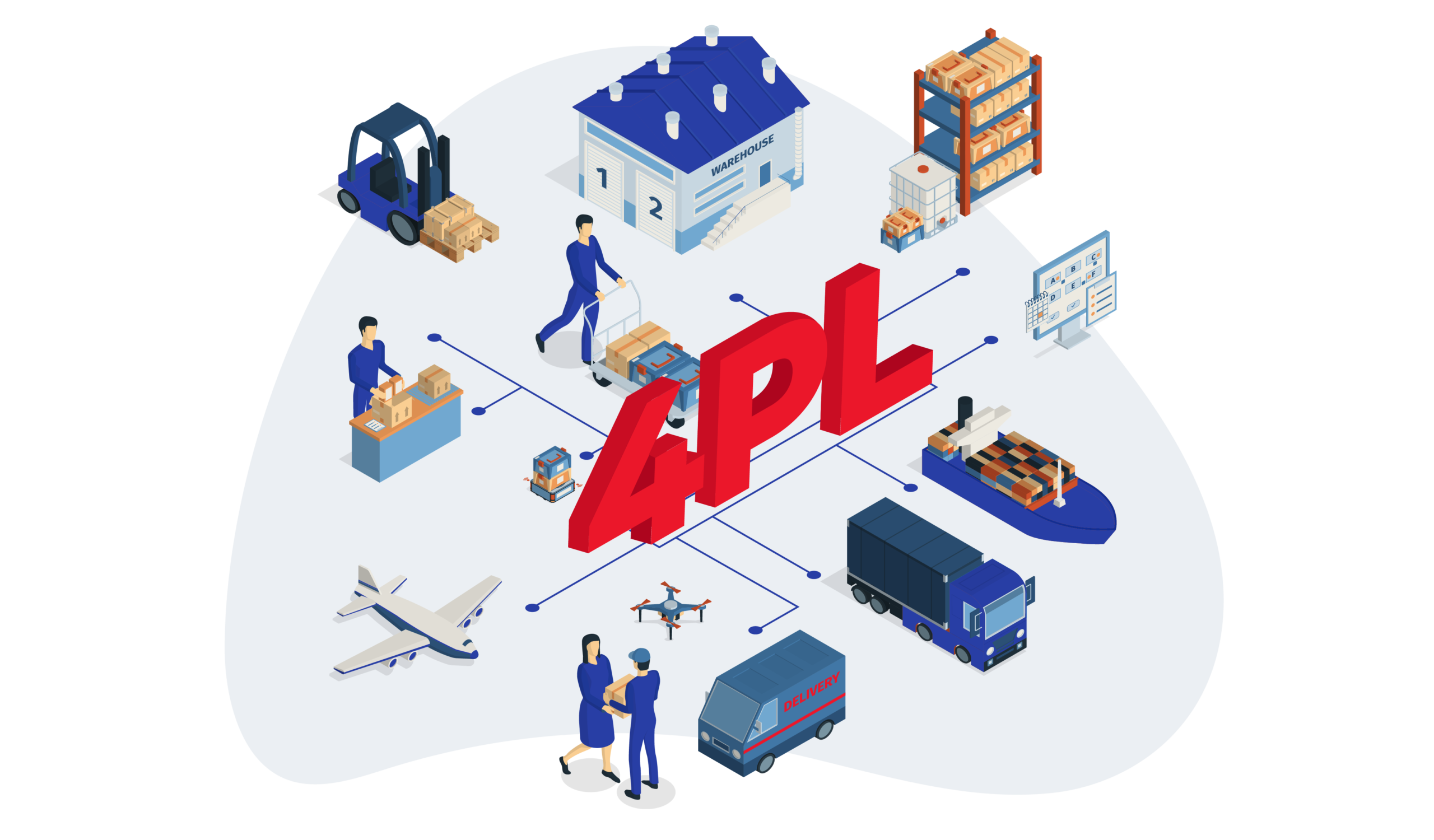Comprehensive Guide to Inventory Management in Logistics

Inventory management in logistics is one of the most important aspects of any business. If done correctly, it helps simplify operations and improve profits. This guide will discuss everything you need to know about inventory in a logistics setting.
What Is Inventory Management in Logistics?
Inventory management is a system that companies use to keep track of the products they have. It is essential for companies that sell items online, through many different channels, and in physical stores.
The process includes ordering new products, storing products, adjusting how often new products are ordered, and predicting how much inventory will be sold.
4 Main Challenges of Inventory Management in Logistics
Unfortunately, sometimes things get tricky. The four main challenges in inventory management include:
- Receiving accurate stock details
- Outdated processes
- Changing customer demand
- Warehousing space
Let’s take a closer look at these drawbacks.
1. Receiving Accurate Stock Details
If you don’t have accurate stock details, you won’t know when to refill stock or which stock is moving well.
2. Outdated Processes
Old or manual processes often lead to mistakes and make work slower.
3. Changing Customer Demand
People’s needs change all the time. If your business can’t track how people’s needs change, you won’t know when or why their needs change.
Check out our article about on-demand logistics!
4. Poor Use of Warehousing Space
If products are hard to find, staff will only waste time. This happens when warehousing space isn’t being used effectively.
3 Main Benefits of Logistics and Inventory Management for Your Business

The three benefits of inventory management in logistics for your business:
- More cost-efficient
- Higher cash flow
- Enhanced customer satisfaction
1. More Cost-Efficient
Understanding stock trends means you know how much and where you have something in stock. Keep less stock at each location (store, warehouse) because you can pull from any place to fill orders. It mainly decreases inventory costs.
Cheaper costs are also one of the benefits of pick and pack fulfillment and logistics.
2. Higher Cash Flow
Managing your inventory well means higher cash flow because you spend money on things that sell.
3. Enhanced Customer Satisfaction
Making sure customers get the items they want right away is great for your business. Improving customer experience is so important!
6 Inventory Management Best Practices

Some companies find it hard to understand all the details of logistics and inventory control procedures. If you’re one of these businesses, don’t worry.
The six best practices for logistics inventory management:
- Plan first
- Always have critical stock
- Review all shipments carefully
- Delegate the right inventory management team members
- Find the balance between inventory costs and the benefits of having available stock
- Prepare other high-level plans
1. Planning Comes First, Then Execution
Good managers monitor their inventory constantly. You should always be updating your plan and then putting it into practice. You should also track metrics and update your forecasts for the coming months every week.
2. Always Have Critical Stock
Always have critical stock so you never run out and lose sales. Start by having an inventory control process in place.
3. Review All Shipments Carefully
When you get a new product, it’s essential to check for any damage.
4. Delegate the Right Inventory Management Team Members
Having staff on board with the inventory control process would be best. But you have to pick the right people for the job. They should be good at math and have time to do it correctly.
Ideally, your inventory management team will include people from all parts of the process, from warehouse managers to procurement specialists to pickers on the floor. If you have a smaller company, consider including all managers and some front-line staff representation.
In addition, check out our guide on door-to-door delivery.
5. Find the Balance Between Inventory Costs and the Benefits of Having Available Stock
The single most effective inventory management strategy to control and reduce inventory costs is…
Deborah Schroeder-Saulnier, Founder & CEO of Excel Leadership Solutions
A strategy of discipline. Regardless of size, large or small, most companies work to achieve two primary objectives – grow the business by satisfying the customer and manage costs. Businesses seek big data to deliver strategic recommendations based on assessing the customer experience and measuring the cost of inventory. Working under a discipline strategy, companies can effectively mitigate two potential risks – dissatisfying customers by promising a product when there is none and increasing cost by losing tack of outdated stock in the warehouse.
Find a balance between how much it costs to make and store products and how likely you will run out of them. You must know your business well enough to choose the correct forecasting methods. Figure out how much your stock costs, including warehousing and perishables, and weigh that against how much demand there is for your products and how much it would cost to run out of them.
6. Prepare Other High-Level Plans
If you don’t have control over what you’re selling, you need to work on other parts of your business. Do you have a good quality management plan? Have you looked at your facility management plan recently?
Inventory Management Techniques

Some companies use formulas and analysis to plan how much stock to have. Others use procedures. All of these methods aim for accuracy. The techniques a company uses depend on the company’s needs and the stock it has.
Find out which inventory management techniques work best for your business.
1. ABC Analysis
The ABC analysis method shows the most and least popular types of stock.
2. Batch Tracking
The batch tracking method groups similar items to track when they expire.
3. Bulk Shipments
The bulk shipment method is when suppliers put materials in a ship or truck without packing them. You buy, store and then ship the materials all at once.
Did you know? Managing inventory levels is also needed for successful omnichannel third-party logistics.
4. Consignment
Consignment inventory management is when you pay your supplier only when the product has been sold. The supplier still owns the inventory until your company sells it.
5. Cross-Docking
This method is for moving packages from the supplier’s truck to the delivery truck. Basically, there’s no need to use a warehouse.
6. Demand Forecasting
This method helps predict customer demand.
7. Dropshipping
The supplier ships items directly from its warehouse to the customer with dropshipping.
8. Economic Order Quantity (EOQ)
The EOQ formula calculates how much inventory a company should order to reduce storage and other costs.
9. FIFO and LIFO
FIFO is when you move the oldest stock first. LIFO is when you think that prices always rise, so the most recently-purchased inventory is the most expensive and thus sold first.
10. Just-In-Time Inventory (JIT)
Some companies use the JIT method to keep their stock levels low before they refill.
11. Lean Manufacturing
This method gets rid of waste from the manufacturing system.
12. Materials Requirements Planning (MRP)
MRP helps with making plans, organizing, and controlling the inventory for manufacturing.
13. Minimum Order Quantity
A company will order small amounts of inventory from wholesalers each time to keep it cheap.
Interested in learning more about order delivery? Check out our article on delivery scheduling!
14. Reorder Point Formula
This formula calculates how much stock is needed.
15. Safety Stock
If the company can’t replace those items, make sure to have extra stock.
Top 5 Inventory Management Software
With inventory management, it’s essential to have the right software tool for it. Take a look at our top picks for inventory management software down below.
1. Cin7 Orderhive – Best in General
Cin7 Orderhive is an affordable solution with many features that can easily integrate into your inventory, order, and fulfillment process.
2. inFLOW – Best for B2B Companies
inFLOW‘s platform is easy to use and provides a central inventory database.
3. Lightspeed Retail – Best for Retail Stores
Lightspeed Retail‘s program will help you keep track of your stock and also help you manage your sales. It’s best for small retail shops. The program has tools to help you track inventory, and it also has excellent features for e-commerce.
4. Upserve – Best for Restaurants
According to Upserve, their automatic tools that track ingredients and costs help increase revenue by 30% and reduce the time it takes to get food to the table by 10%.
5. Megaventory – Best for Manufacturing
Megaventory is a program that will help you keep track of your inventory and manufacturing updates.
Inventory Management in Different Industries

Let’s take a closer look at inventory management in different industries.
Retail Industry
Retail inventory management is the process of ensuring you have the right stuff for people to buy. You don’t want too little or too much, so you must keep track of what people buy.
Good inventory management in retail helps keep costs low and makes it easier to understand sales patterns. Hence, retailers have access to more information, including:
- Product availability
- Product quantities
- Which stock sells well and which doesn’t
- Profit margin by product
- Discontinuing of product
- How different seasons affect sales
Healthcare Industry
Healthcare inventory management, also called supply chain management, is a process that keeps track of your health system’s inventory. Inventories include medical supplies, prescriptions, and other health products.
Further, a good inventory management system is a must for healthcare organizations. It helps protect the organization from incorrect tracking of products and supplies.
Manufacturing Industry
Manufacturing inventory management is tracking the products and goods being made. It helps to reduce costs and makes the manufacturing process go smoother.
There are three inventories for manufacturing: raw materials, work-in-progress, and finished goods.
- Raw Materials Inventory – The materials used in the first stage of production.
- WIP Inventory – The raw materials used to make the finished product.
- Finished Goods Inventory – Contains products that are almost done and ready to be shipped.
What’s Next for Inventory Management?
The future of inventory is full of new technology. Virtual reality, artificial intelligence, digital signage, and inventory-less stores are changing how businesses work, and customers buy things.
1. Cloud Technology
Cloud technology is not new. In fact, it has been around for a while, but it keeps getting better. More people are using it because it is easy to set up and use.
In 2017, the amount was $145 billion. By 2021, it had grown to $332 billion. It is expected to reach $397 billion by 2022.
2. Internet of Things
The Internet of Things (IoT) has been around for a while now. Businesses have been investing in this technology for a while. As we move into 2022, the IoT investment will keep increasing.
3. More Widespread Use of 3PLs
Third-party logistics (3PL) is a cost-effective solution for smaller businesses that need to operate warehouses and own vehicles. Also, cloud software and IoT have made it easier for 3PL companies like Dropoff to offer their services.
Moreover, the 3PL industry is projected to grow 7.1% through 2027. The drive will keep growing, making it easier for businesses to work together without losing service quality or delivery times.
Bottom Line
At Dropoff, we understand the importance of managing your inventory efficiently. That’s why we offer services that help our customers keep track of their inventory and ensure that orders are fulfilled quickly and accurately.
We have experts ready to help you with product placement and stock rotation. They will make sure your inventory is always up-to-date. We also have tools that will help you deal with issues quickly.
By talking to a Dropoff expert, you will always have what you need on hand.
FAQs on Inventory Management
1. What is inventory management in logistics?
The role of inventory management in logistics is keeping track of what a company has in stock.
2. How can I improve my inventory management system?
You can improve your inventory management system by keeping correct data and taking regular physical stock counts. A transparent system can help everyone make intelligent business decisions.
3. What are the objectives of inventory management?
Inventory management has two main objectives: keeping enough stock to meet customer needs and spending as little money as possible on supply while still making a profit.
4. What is the importance of inventory management in logistics?
Inventory management is vital in the supply chain because it helps companies balance customer demand with their storage space and cash limitations.






